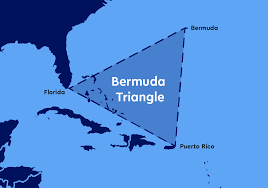India, with its vast coastline of over 7,500 kilometers, is a maritime powerhouse in South Asia. The country’s ports serve as gateways to international trade and play a critical role in its economic development. Among all the ports scattered across the Indian coastline, the Jawaharlal Nehru Port (JNPT), also known as Nhava Sheva, stands out as the largest container port in India. This blog explores the significance, operations, infrastructure, and impact of JNPT on the Indian economy and global shipping industry.
Overview of Jawaharlal Nehru Port (JNPT)
Established in 1989, JNPT is located on the eastern shores of the Arabian Sea in Navi Mumbai, Maharashtra. The port was developed to decongest the Mumbai Port Trust and to provide a dedicated hub for container traffic. Over the years, it has grown exponentially and has become the backbone of India’s international trade. It handles more than 5 million TEUs (Twenty-foot Equivalent Units) annually, making it the busiest container port in India.
The port operates under the Ministry of Ports, Shipping and Waterways and has evolved into a world-class facility that connects India to over 100 ports worldwide.
Key Features of JNPT
-
Strategic Location:
-
Situated near Mumbai, India’s financial capital, JNPT enjoys excellent connectivity with inland production and consumption centers.
-
Its proximity to the Mumbai-Pune industrial belt gives it an edge in cargo handling and logistics.
-
-
State-of-the-Art Infrastructure:
-
JNPT boasts multiple terminals including:
-
JNPT Container Terminal
-
NSICT Terminal (DP World)
-
GTI Terminal (APM Terminals)
-
BMCT Terminal (PSA International)
-
-
The port is equipped with modern container handling equipment like Quay Cranes, Rubber-Tyred Gantry Cranes (RTGs), and Rail Mounted Gantry Cranes (RMGs).
-
-
Connectivity:
-
The port is seamlessly connected through rail, road, and inland waterways.
-
The Dedicated Freight Corridor (DFC) project aims to further boost the port’s rail connectivity, reducing cargo evacuation time and costs.
-
-
Digital Initiatives:
-
JNPT has embraced technology to streamline operations through the Port Community System (PCS), Electronic Data Interchange (EDI), and gate automation systems.
-
These digital solutions have reduced dwell times and improved cargo tracking for clients.
-
Cargo Handling and Capacity
JNPT primarily handles containerized cargo, but it also deals with liquid cargo and automobiles. As of 2023, it has a container handling capacity of over 10 million TEUs, which is expected to grow with ongoing infrastructure expansion and modernization projects.
Some major commodities handled at JNPT include:
-
Engineering goods
-
Textiles
-
Electronics
-
Chemicals
-
Pharmaceuticals
-
Food products
The port plays a pivotal role in the export of manufactured goods and the import of machinery, electronics, and consumer goods, contributing significantly to India’s trade balance.
Economic Significance of JNPT
-
Trade Contribution:
-
JNPT handles around 55% of India’s container cargo, making it vital for foreign trade.
-
The port supports major Indian industries by facilitating timely export and import activities.
-
-
Revenue and Employment:
-
The port contributes substantially to government revenues through duties, taxes, and service charges.
-
It also generates employment for thousands of workers directly and indirectly, including logistics operators, shipping agents, and customs officials.
-
-
Inland Development:
-
The port has fostered the development of logistics parks, container freight stations (CFSs), and inland container depots (ICDs).
-
This has improved regional infrastructure and created economic opportunities in adjacent areas.
-
Expansion and Modernization Efforts
In recent years, JNPT has embarked on a massive expansion drive to keep pace with global standards and rising trade volumes:
-
Fourth Terminal – BMCT:
-
Developed by PSA International, the Bharat Mumbai Container Terminals (BMCT) is a deep-draft terminal with cutting-edge technology.
-
Upon full completion, it will add an annual capacity of 4.8 million TEUs.
-
-
Dedicated Freight Corridor (DFC):
-
This project aims to link JNPT with North India through a high-speed, high-capacity freight rail network.
-
The DFC is expected to reduce logistics costs and improve turnaround times drastically.
-
-
Sagarmala Programme:
-
JNPT is a flagship project under the Indian government’s Sagarmala Initiative, which seeks to enhance port connectivity, infrastructure, and coastal development.
-
-
Sustainability Measures:
-
The port is also investing in green port initiatives, such as:
-
Use of solar power
-
Sewage treatment plants
-
Shore power facilities for ships
-
Emission control measures
-
-
These efforts make JNPT one of the most environmentally conscious ports in South Asia.
-
Challenges Faced by JNPT
Despite its many strengths, JNPT also faces some challenges:
-
Congestion during peak times due to high cargo volumes.
-
Bureaucratic delays in customs clearance and cargo handling.
-
Competition from emerging private ports like Mundra Port in Gujarat, which is fast becoming a strong rival.
However, JNPT continues to adapt by improving operational efficiency, investing in automation, and partnering with global players for technology transfer and innovation.
Conclusion
The Jawaharlal Nehru Port (JNPT) stands as a symbol of India’s maritime ambition and global trade integration. As the largest container port in the country, it not only supports economic growth but also strengthens India’s position in the global supply chain. With continuous modernization, policy support, and private-sector collaboration, JNPT is well on its way to becoming a global transshipment hub.
As international trade becomes increasingly containerized and digitized, ports like JNPT are not just transit points but critical infrastructure assets driving national prosperity. India’s future in the global logistics landscape is deeply tied to the growth and evolution of ports like JNPT.
